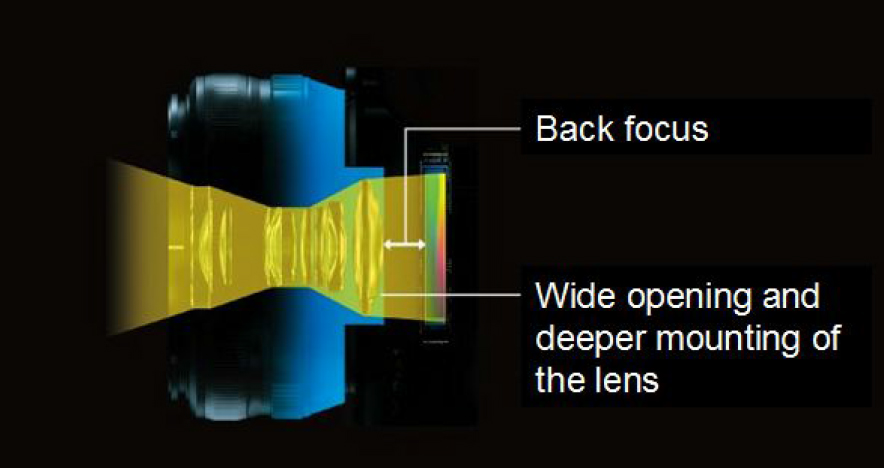“Why don’t Fujifilm make a full frame camera?” Interview With Fujifilm Manager Mr. Takashi Ueno

The Fujifilm Blog published an interview with Fuji Manager Mr. Takashi Ueno. Here are some excerpts.
“Full frame body + High performance lens” can be achieved with “Small APS-C body + High performance lens”
Mr. Takashi Ueno “We gave a lot of thought to this, and reached our conclusion that APS-C is the best format for the optimum balance of body size and image quality. […] Higher image quality can be achieved with full frame sensors, but in order to maximize the use of the sensor size, the lens will be very bulky and heavy.
[…] if you attach the large and heavy high performance lens to the full frame DSLR, then you will certainly get high image quality. The combination will maximize the potential of the full frame, but if you have to carry the bulky lens everywhere to achieve the high image quality, then this is not what FUJIFILM is aiming for.
Question: “OK, Smaller and lightweight body can be achieved with APS-C but how about the “High image quality” part?”
Mr. Takashi Ueno “The technology of the FUJINON lens has a lot to do with that. With the power of FUJINON lens, we can achieve the full frame image quality with the APS-C sensor. […] We learned that the disadvantage can be recovered with the lens performance through various simulations.
Here is an example. It is generally believed that the lens performs at its best with 1 to 2 stop down from the maximum aperture. We tried to break the norm. Because if there is such belief, then the lens is very unlikely to perform at its best from corner to corner with the aperture wide open. But if we can break the norm, then we will achieve bokeh and sharpness that is equivalent to that of a full frame with 1 to 2 stop down. We can achieve the image quality that is equivalent to that of full frame.
Which is better? An f/1.4 lens on a full frame sensor and then used 1 stop down to prevent degradation in the image quality in the corner or an f/1.4 lens on an APS-C that see no degration in the image quality at its maximum aperture value?
You cannot really see the difference in bokeh between the APS-C wide open and the full frame one stop down. However, if the APS-C is wide open, then the shutter speed will be twice as fast as the full frame resulting in be less blur caused by hand shake or subject movement. If the picture becomes blurry, then the high image quality becomes meaningless.”
X-TRANS
Through various simulation, we learned that the 16M X-Trans sensor had the potential to rival the resolution of a 24M bayer sensor. [admin: confirmed by dpreview tests].
The combination of FUJIFILM color reproduction, the X-Trans sensor, and the FUJINON lens technology, allowed us to create an interchangeable lens camera that could rival the image quality of full frame D-SLR in the APS-C format.
If we make a cheap low performing lens, then the degradation in image quality is more apparent for the X-Trans sensor than a typical sensor. X-Trans sensor requires high performance lens.
Read the whole interview at the fujifilm-blog here
Good move Fujifilm… better to go directly Medium Format… we already have a pretty solid rumor about it here ;)

